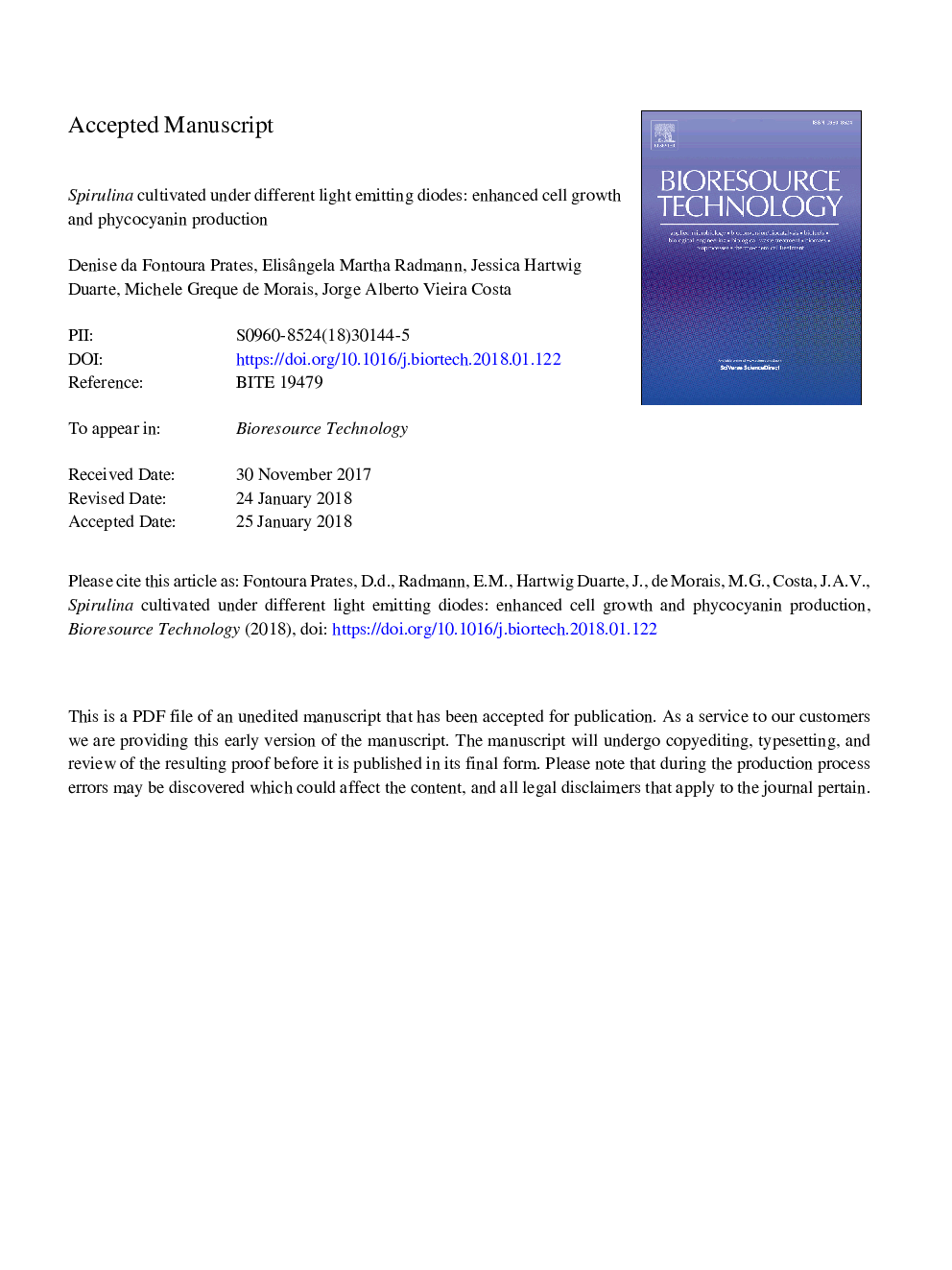| Article ID | Journal | Published Year | Pages | File Type |
|---|---|---|---|---|
| 7067878 | Bioresource Technology | 2018 | 28 Pages |
Abstract
This study evaluated light emitting diodes (LEDs) as a light source in Spirulina sp. LEB 18 cultures in terms of growth parameters and biomass composition. Different photoperiods (partial and integral) and colors (blue, green, red and white) were assessed. Blue, green, red and white LEDs increased biomass productivity and maximum specific growth rate of such cultivations. The maximum biomass concentration (1.77â¯Â±â¯0.02â¯gâ¯Lâ1) was obtained when red LEDs in integral light photoperiod were applied to cultivations. The biomass composition showed around 12.8% carbohydrates (wâ¯wâ1), 57.4% proteins (wâ¯wâ1) and 12.7% lipids (wâ¯wâ1). The major fatty acids produced during cultivations were palmitic, linoleic and γ-linolenic. Green LEDs in partial light photoperiod promoted a higher concentration of phycocyanin (126.39â¯mgâ¯gbiomassâ1). The potential of LEDs as an energy source in Spirulina sp. LEB 18 cultures was demonstrated by the biomass and bioproducts photostimulation.
Related Topics
Physical Sciences and Engineering
Chemical Engineering
Process Chemistry and Technology
Authors
Denise da Fontoura Prates, Elisângela Martha Radmann, Jessica Hartwig Duarte, Michele Greque de Morais, Jorge Alberto Vieira Costa,
